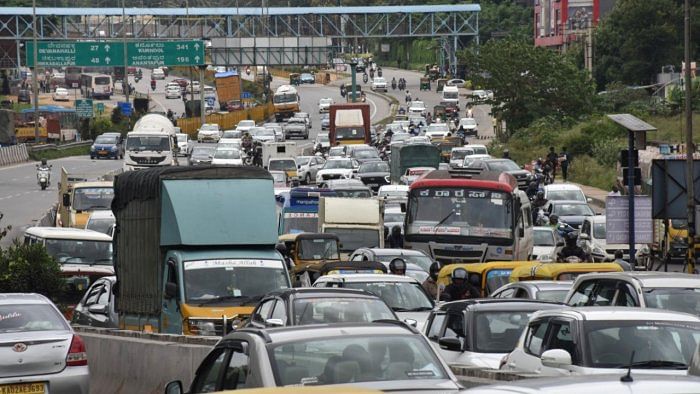
Bengaluru witnessed a 16% spike in car registrations during FY 2021–22. With the addition of about 1 lakh cars annually over the past few years, several parts of the city continue to experience severe traffic congestion. A few initiatives are underway to ease this problem .
The expansion of Bengaluru’s current metro-rail network has been a burning issue for most commuters. A 16-km addition to the purple line from Baiyappanahalli to Whitefield and the introduction of a yellow line from Rashtreeya Vidyalaya (RV) road to Bommasandra (Electronic City) are expected to be game changers when they become operational. Bangalore Metro Rail Corporation Limited (BMRCL) expects the Electronic City line and the crucial link between Baiyappanahalli and KR Puram to open by July 2023. While other lines of Namma Metro are in the pipeline, with the opening of these two lines, the infamous Silk Board and Tin Factory junctions can get some respite benefiting the commuters across the western and eastern parts of the city. For instance, currently, travelling between Kengeri and Whitefield by road takes more than 2 hours during peak hours. Metrorail could cut this travel time by at least 45 minutes.
Also Read | Fix traffic mess, don’t claim privilege
The National Common Mobility Card (NCMC), launched in March 2023, is another promising initiative enabling Bengaluru commuters to seamlessly transfer between metro and bus services. BMRCL has started issuing these cards to the public, and reportedly, Bengaluru Metropolitan Transport Corporation (BMTC) is in the process of acquiring 8,000 new electronic ticketing machines (ETMs) that accept payments from these cards along with Unified Payments Interface (UPI) payments. Once live, these cards have the potential to boost multi-modal transport in Bengaluru, primarily due to the hassle-free experience and convenience offered to commuters. The Namma BMTC mobile application, launched in April 2023, enables commuters to track buses in real time.
The Bengaluru Metropolitan Land Transport Authority (BMLTA) Bill, a long-pending crucial piece of legislation, was passed by the Karnataka Assembly in December 2022. It will help establish BMLTA for improving coordination among various agencies like BMTC, BMRCL, and Bruhat Bengaluru Mahanagara Palike (BBMP). BMLTA will enable the quick and smooth implementation of multi-modal initiatives such as first- and last-mile connectivity and the Transit-Oriented Development (TOD) policy.
The TOD policy for Bengaluru, prepared jointly by the Directorate of Urban Land Transport (DULT) and BMRCL in 2019, was approved by the Karnataka government in November 2022. The policy is aimed at increasing the population density along transit corridors to 250–400 persons per hectare by boosting vertical development, i.e. addition of floors in buildings, thereby improving commercial activities and public transport patronage.
However, in a market-driven metropolis like Bengaluru, ensuring affordable housing—a key element to the success of the TOD policy—is a major hurdle. Effective interdepartmental synergy and coordination are paramount to the success of the TOD policy. The establishment of the BMLTA will be beneficial in this regard, but the actual allocation of authority to the BMLTA might be necessary for smooth and effective actions.
The launch of new metro lines and commuter-friendly measures by BMRCL and BMTC are welcome steps towards enhancing public transport. However, their effectiveness needs to be evaluated over time in terms of improved bus/metro-rail patronage. Further, urging travellers captive to the comfort and convenience of personal vehicles to switch to public transport is a serious challenge for policymakers. Lack of disincentives for daily commuters to use personal vehicles also magnifies the problem.
With more commuters preferring personal vehicles, the city’s traffic condition is bound to worsen. A single-occupancy car takes up one-third of the road space for a bus while carrying only one-sixtieth of the bus’ passenger load. The congestion thus caused also slows down the 60 commuters travelling by bus. This disproportionate impact needs attention and highlights the necessity of democratising road space.
Additionally, investments in building and maintaining bus stops and developing a safe and resilient pedestrian infrastructure will help improve first- and last-mile accessibility to buses and metrorail and boost public transport ridership in the city.
There is a need for the citizens of Bengaluru to become more environmentally conscious and adopt sustainable mobility options. Aggressive awareness campaigns and investments in this direction are required from policymakers.
(The writer works at the Centre for Study of Science, Technology and Policy.)